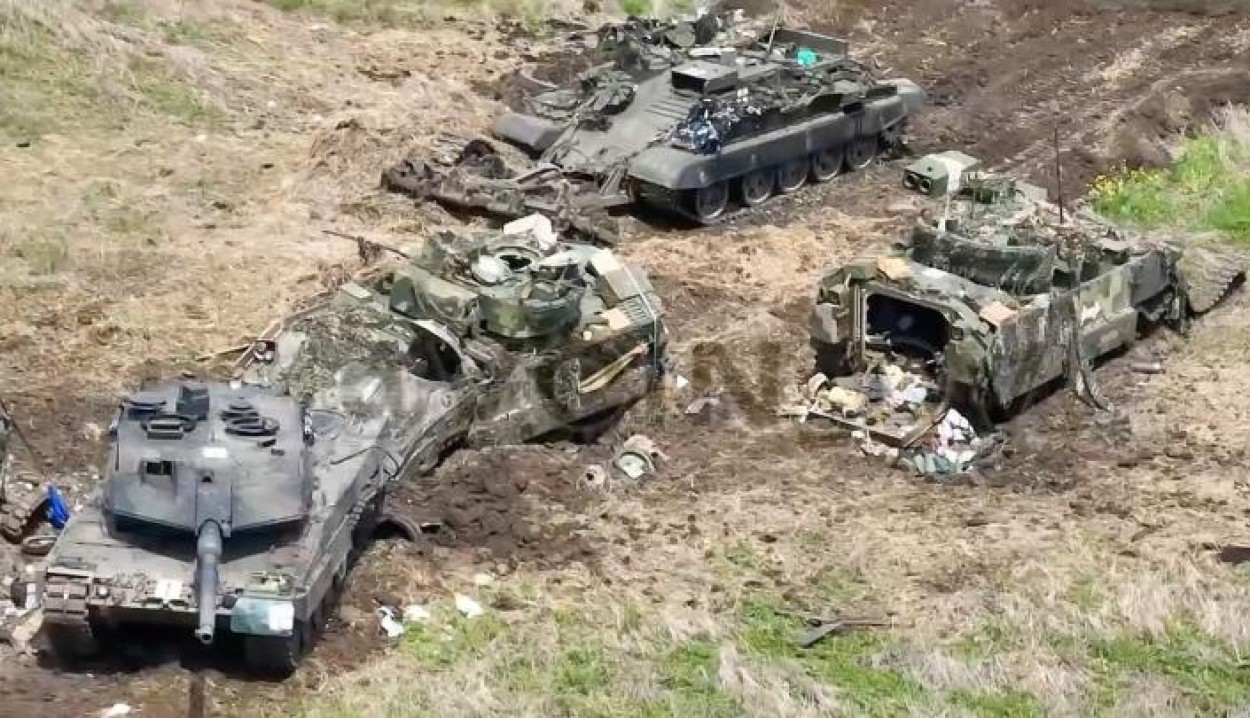Russia’s feared and popular Lancet-3 loitering munitions have begun hitting Ukraine’s German-made Leopard 2 main battle tanks (MBT), suggested videos emerging on social media.
Ukraine War: BrahMos Variant Achieves 100% Kill Rate; Russian Missile Evades All Defenses & Pounds Odesa
So far, Ukraine has lost Leopards due to artillery fire, hits from anti-tank guided missiles (ATGM) fired from Ka-52 Alligator helicopters, or disabled and abandoned in long convoys of destroyed armored systems with other Western armor.
But if videos posted on Twitter are anything to go by, two Leopards were hit by Lancets, typically showing the kamikaze drones closing in on the tanks, before the videos cutting to overhead Orlan Unmanned Aerial Vehicles (UAV) showing the strike.
While the videos do not show the complete aftermath of the strike, it can be assumed that the tanks were not entirely destroyed but substantially damaged from participating in any further operations.
The Lancet-3 has emerged as the most popular weapon of the war, destroying 45 percent of the North Atlantic Treaty Organization’s (NATO) and US artillery systems since the beginning of the war in February 2022.
It has been used primarily for counter-battery warfare, destroying dozens of M777s lightweight howitzer, Polish KRAB Self-Propelled Gun (SPG), hitting enemy radars and surface-to-air missile (SAM) batteries and small Ukrainian naval boats, with the videos going viral on social media.
Two Leopards Hit By Two Lancets?
One video shows a targeting reticule from the Lancet getting close to a Leopard 2A6 tank closing in on the back of the turret before an overhead UAV captures the rest of the action.
The Lancet-3, with its distinct large X-shaped wings, is seen flying in from the tank’s right and striking what one tweet described as “going right under the turret.”
⚡️ Leopard 2A6 burns down after a Lancet goes right under the turret pic.twitter.com/2d189yay7f
— What the media hides. (@narrative_hole) July 23, 2023
The initial explosion upon impact seems only primary yet large, suggesting the drone hit some type of fuel storage. Many videos of hits from Lancets on armor show small initial explosions and light smoke and fire, giving the impression the strike has been unsuccessful.
However, the fires soon become intense, brighter and then trigger a massive explosion, as the minor blast ignites the ammunition inside. Many of Poland’s KRAB SPG have been seen getting destroyed this way.
While the eventual fate of this 2A6, near Zaporizhzhia, is unknown, many Russian Telegram groups claimed the damage was extensive enough to disable and render it inoperable for combat significantly.
Another video showed the Lancet hitting another Leopard, believed to be a 2A4 variant, on the barrel instead of the turret. Striking the turret would have set off the ammunition in the magazine or the barrel’s breech holding the round to fire, setting off a secondary explosion.
Ukraine’s Failed Counteroffensive
Ukraine’s counteroffensive, in general, has been widely accepted to have failed, unable to push back the Russians from any of their positions 550 miles (900 kilometers) long front, that covers Donetsk, Lugansk, Zaporizhzhia or Kherson, while suffering massive casualties itself.
But going by the official reactions in Russia and coverage of the war by its influential military bloggers, Moscow is not celebrating and is cautiously watching every Ukrainian move, assuming any lowering of their guard could be opportunistically exploited.
The Leopards and the American Bradley Infantry Fighting Vehicle (IFV) were Ukraine’s leading platforms into its counteroffensive, besides dozens of US and Australian battlefield tactical vehicles like the MRAP and Bushmaster.

Its biggest weakness has been assessed to be artillery, tanks, and a functional air force since it solely relies on the West for the first two.
Over the next year, when the training of the Ukrainian pilots on the F-16 concludes, it will have a significant capability. However, that, too, is not of an indigenous variety and is vulnerable to highly sophisticated Russian air defenses.
- The author can be reached at satamp@gmail.com
- Follow EurAsian Times on Google News




